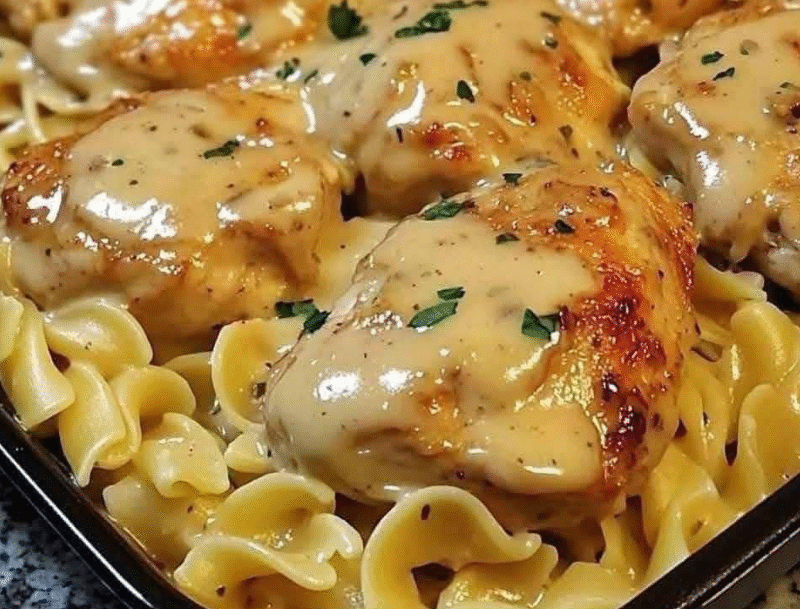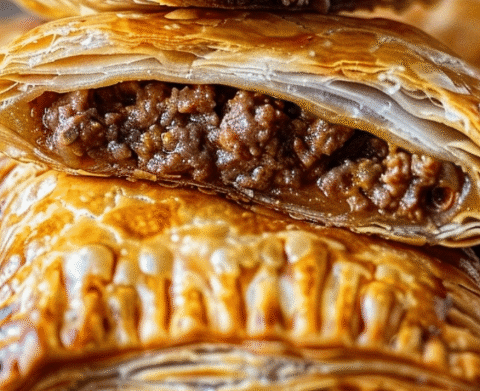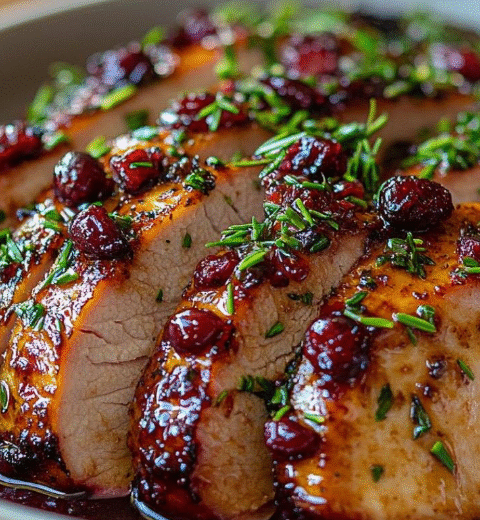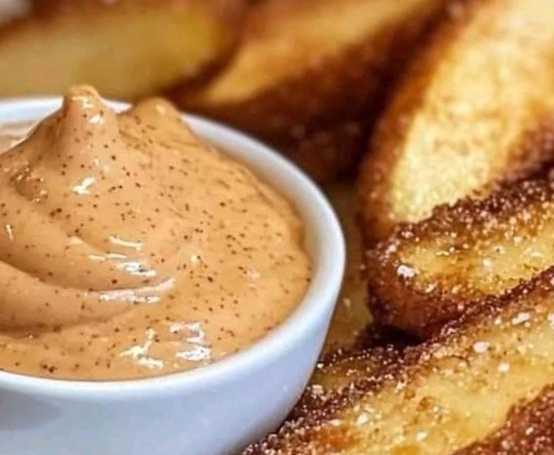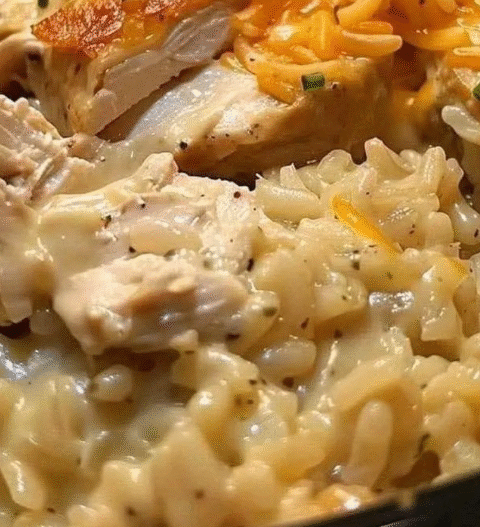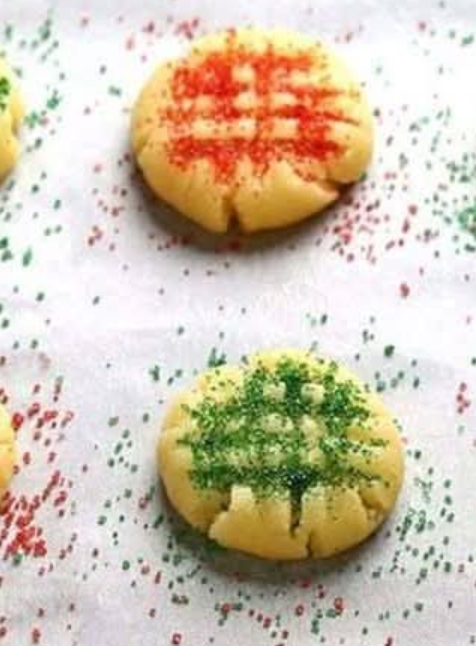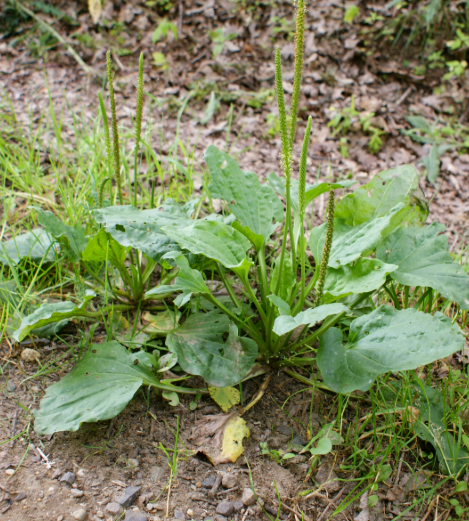One‑Pan Chicken with Buttered Noodles 🍗🍝
When life’s busy but you still want something comforting, swift, and satisfying—this One‑Pan Chicken with Buttered Noodles is your hero. Tender chicken breasts, garlicky broth, and buttery egg noodles all cooked in the same skillet means minimal cleanup and maximum flavor.
Why This Recipe Works
This dish is a classic “one‑pan wonder.” The chicken sears to develop flavor, then the broth and noodles cook together to soak up the savory juices. Finally, butter and optional cream or cheese bring richness and a silky finish. Many similar recipes use heavy cream or butter to elevate the sauce. :contentReference[oaicite:0]{index=0}
What You’ll Learn
- Full ingredient list (US + metric) with purpose of each
- Step‑by‑step cooking method with tips and timing
- Chef’s tricks and pitfalls to avoid
- Variations & ways to customize
- Nutrition estimates & health notes
- Storage, reheating & food safety advice
- 10 FAQs to answer your questions
- Serving & presentation ideas
Ingredients & Their Roles
Base Ingredients (US / Imperial)
- 4 boneless, skinless chicken breasts
- 2 tbsp olive oil
- 3 garlic cloves, minced
- 2 cups chicken broth
- 1 cup heavy cream (optional but recommended for richness) :contentReference[oaicite:1]{index=1}
- 8 oz egg noodles (or your pasta of choice) :contentReference[oaicite:2]{index=2}
- 3 tbsp butter (for finishing) :contentReference[oaicite:3]{index=3}
- ¼ cup grated Parmesan cheese (optional garnish) :contentReference[oaicite:4]{index=4}
- Salt & freshly ground black pepper, to taste
- Fresh parsley or herbs (for garnish, optional)
Approximate Metric Conversions
- Chicken breasts: ~4 pieces (≈ 600–700 g total, depending on size)
- Olive oil: ~30 mL (2 tbsp)
- Garlic: ~3 cloves (~9–12 g)
- Chicken broth: ~480 mL (2 cups)
- Heavy cream: ~240 mL
- Egg noodles: ~225 g
- Butter: ~42 g (3 tbsp)
- Parmesan: ~25–30 g
Purpose & Interaction of Ingredients
- The **chicken** provides the main protein; searing develops flavor and texture.
- **Olive oil** helps the initial sear and prevents sticking.
- **Garlic** adds aromatic depth and flavor to both chicken and sauce.
- **Chicken broth** is the cooking liquid that infuses flavor into the noodles and provides base for the sauce.
- **Heavy cream** (optional) enriches the sauce, making it creamy and luxurious. Without it the sauce will be lighter.
- **Egg noodles** absorb the flavors from the broth, creating a unified dish rather than separate pasta.
- **Butter** at the end gives a silky finish and richness.
- **Parmesan** adds umami and a nutty savory accent (optional but elevates). :contentReference[oaicite:5]{index=5}
- Salt, pepper, and herbs help balance flavors and add freshness.
Step‑by‑Step Instructions
1. Prep & Season
- Pat the chicken breasts dry with paper towels (this helps with browning).
- Season both sides generously with salt and pepper.
- Minced garlic is ready — have it close by for quick sauteing.
2. Sear the Chicken
In a large skillet (wide, with a lid), heat the olive oil over medium heat. Once shimmering, add the chicken breasts. Cook **5–6 minutes per side**, or until golden brown and mostly cooked through. (Cooking times vary by thickness.) Serve or rest the chicken aside. :contentReference[oaicite:6]{index=6}
3. Build the Sauce & Cook Noodles
- In the same skillet (with residual oil and browned bits), sauté the minced garlic ~30 seconds until fragrant (don’t let it burn).
- Add the chicken broth (2 cups) and heavy cream (if using). Bring to a gentle simmer. :contentReference[oaicite:7]{index=7}
- Add the egg noodles in, pressing them gently so they’re submerged in the liquid.
- Cover, reduce heat slightly, and cook ~8–10 minutes (or per noodle package instructions) until noodles are tender and most of the liquid is absorbed. Stir occasionally to prevent sticking. :contentReference[oaicite:8]{index=8}
4. Finish the Dish
- Lower heat. Stir in butter and grated Parmesan until fully melted and sauce is creamy. :contentReference[oaicite:9]{index=9}
- Return the chicken breasts to the pan, nestling them into the noodles. Simmer a minute or two to heat through and allow flavors to meld.
- Garnish with chopped fresh parsley or herbs, additional Parmesan, or cracked pepper.
5. Serve
Serve warm. You can slice the chicken or leave whole. Spoon noodles underneath or around the chicken, ensuring plenty of sauce per serving.
Chef Tips, Tricks & Common Pitfalls
- Use a wide skillet with lid: Gives the noodles space to cook evenly and helps trap steam.
- Don’t overcook chicken in searing stage: It still has to finish cooking with the noodles; overcooking early leads to dry meat.
- Stir noodles gently: Occasional stirring ensures even liquid absorption and prevents sticking.
- Adjust liquid as needed: If it dries too fast, add a splash more broth; if too soupy, let it simmer with lid off to reduce.
- Butter & Parmesan at the end: Adding them later preserves their flavor and prevents separation in high heat. :contentReference[oaicite:10]{index=10}
- Rest chicken briefly: Gives juices time to redistribute so it stays moist.
- Use fresh Parmesan: Pre‑grated often contains anti‑caking agents that may affect melt and texture.
Variations & Custom Twists
Add Vegetables
Toss in spinach, peas, mushrooms, bell peppers, or broccoli in the last few minutes, so they cook lightly and retain texture. Many “one pot chicken and noodles” recipes include vegetables for color and nutrition. :contentReference[oaicite:11]{index=11}
Spicy Kick
Add red pepper flakes, smoked paprika, or a dash of hot sauce to the sauce for a hint of heat.
Lighter Version (No Cream)
Omit or reduce heavy cream. Use full chicken broth and finish with a little butter and Parmesan. The sauce will be lighter but still flavorful. Some versions of the recipe skip cream entirely. :contentReference[oaicite:12]{index=12}
Use Chicken Thighs
Swap chicken breasts for boneless thighs for extra juiciness. Increase searing time slightly. Many versions allow thighs as substitute. :contentReference[oaicite:13]{index=13}
Cheesy Boost
Stir in extra shredded cheese (mozzarella, cheddar) or top with more Parmesan or a cheese crust under a broiler finish.
Herb & Citrus Lift
Add fresh thyme, basil, or parsley. A squeeze of lemon just before serving brightens the dish.
Nutrition & Health Notes
Here’s a rough estimate per portion (serving 4). Use your brand labels for more precise numbers.
| Component | Estimate per Serving |
|---|---|
| Calories | ~ 450‑550 kcal |
| Protein | ~ 30‑40 g |
| Total Fat | ~ 18‑25 g (with cream & butter) |
| Saturated Fat | ~ 8‑12 g |
| Carbohydrates | ~ 35‑45 g (noodles + remainder) |
| Fiber | ~ 1‑3 g |
| Sugars | ~ 1‑3 g |
| Sodium | Moderate to high (broth, cheese) depending on products used |
Health Tips & Adjustments:
- Use lower‑sodium chicken broth or make your own to control salt.
- Reduce or omit heavy cream and rely on butter + broth for a lighter sauce.
- Use whole wheat or alternative pasta to boost fiber.
- Include vegetables to increase volume and nutrient density without many extra calories.
Storage, Reheating & Food Safety
Storage
- Once cooled, store leftovers in airtight containers. Consume within **3 days** in the fridge.
- Freezing is possible, but creamy sauces may separate. Use gentle reheating and stir well.
Reheating
- Reheat in a skillet over low heat, adding a splash of broth or cream to loosen sauce.
- Microwave in intervals, stirring and adding liquid if it becomes dry.
Food Safety & Tips
- Always cook chicken to internal temperature of **165 °F (74 °C)** for safe consumption.
- Don’t leave perishable food out longer than 2 hours (less in hot climates).
- Use clean utensils, cutting boards, and surfaces to avoid cross-contamination.
Troubleshooting & Common Issues
- Chicken overcooked/dry: Either seared too long or left too long while noodles cooked. Cook chicken partway and finish gently in sauce.
- Noodles undercooked or chewy: Liquid may have been insufficient or heat too low. Add more broth or cover and cook longer.
- Too much liquid / soupy dish: Simmer uncovered to reduce, or increase noodles to absorb more.
- Sauce too thick or clumpy: Stir gently, add more broth or cream, and ensure you don’t overheat butter/cheese.
- Burnt garlic: Garlic should be cooked briefly, not browned deeply, or it becomes bitter.
10 FAQs You Might Ask
1. Can I skip the heavy cream?
Yes — the dish will be lighter. Use extra broth and finish with butter and Parmesan for richness. Many versions do this. :contentReference[oaicite:14]{index=14}
2. Can I use chicken thighs instead?
Absolutely — they are more forgiving and juicy. They may need a bit more searing time. Many recipes allow this substitution. :contentReference[oaicite:15]{index=15}
3. What other pasta types can I use?
Egg noodles are classic, but you can use penne, fusilli, bowtie, or others — just adjust cooking time and ensure enough liquid.
4. How do I prevent noodles from sticking?
Stir occasionally, ensure enough liquid, and use a wide pan so noodles have room. Don’t let the base go bone dry before stirring.
5. Can I make this ahead of time?
You can cook chicken and prep garlic & liquids ahead, but combine and cook noodles just before serving for best texture.
6. Can I add vegetables?
Yes — spinach, peas, mushrooms, or bell peppers work well. Add them in the last few minutes so they don’t overcook.
7. Why is my sauce separating?
Too high heat or adding butter/cream too early can cause separation. Finish sauce gently over low heat and stir continuously.
8. Can I use broth + milk instead of cream?
Yes — milk + a little butter may approximate creaminess. The sauce will be lighter but still tasty.
9. What if leftovers are dry?
Add a splash of broth or cream when reheating to refresh the sauce. Stir gently until creamy again.
10. How thick should the sauce be?
Thick enough to coat noodles but still a little fluid. It shouldn’t be watery nor gelatinous. It will thicken slightly as it cools.
Serving & Presentation Ideas
- Serve on warmed plates so sauce stays silky.
- Garnish each plate with chopped parsley, extra Parmesan, or cracked pepper.
- Slice the chicken or serve whole; arrange it on top or beside the noodles.
- A lemon wedge on the side brightens the flavors.
- Pair with a simple green salad or steamed vegetables to balance richness.
- Offer crusty bread to soak up extra sauce.
Conclusion & Final Thoughts
This **One‑Pan Chicken with Buttered Noodles** recipe strikes the ideal balance between comforting and efficient. With well‑seasoned chicken, garlic-forward flavor, and a creamy buttery noodle base, it’s a dish that feels indulgent without being fussy. Use the tips, variations, and troubleshooting above to adapt it to your ingredients, equipment, or dietary preferences.
If you like, I can also format this into a **printable recipe card**, or create a metric-only version, or even a video outline. Want me to prepare that for you?
